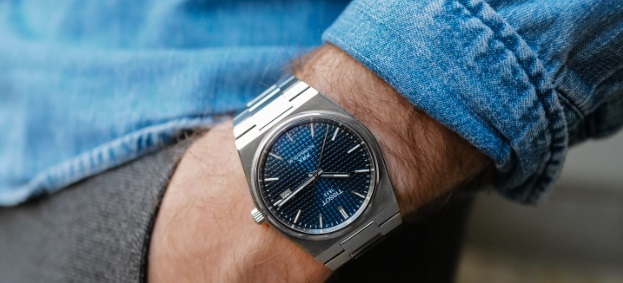The Tissot PRX collection has become a modern icon in Swiss watchmaking, offering a perfect balance of retro design and contemporary technology. But if you’re in the market for a Tissot PRX, you’re likely wondering: should you go for the PRX Quartz or the PRX Automatic?
In this guide, we’ll break down the differences between the two models—from movement and pricing to design and everyday wear—to help you make the best choice for your wrist and budget.
1. The Movement: Quartz vs Automatic
-
Tissot PRX Quartz
The quartz model features a Swiss ETA F06.115 movement, powered by a battery. It offers high accuracy (+/- 10 seconds per month) and is virtually maintenance-free, aside from occasional battery replacements. Perfect for set-it-and-forget-it users. -
Tissot PRX Automatic
The automatic version is powered by the Powermatic 80 movement, delivering an impressive 80-hour power reserve. It’s a self-winding mechanical movement that appeals to traditionalists and horology enthusiasts who appreciate the craftsmanship behind every tick.
🟢 Verdict: If you want precision and low maintenance, go quartz. If you’re passionate about watchmaking and enjoy the mechanical charm, the automatic is for you.

2. Price Comparison
-
PRX Quartz Price: ~$375 – $450 USD
-
PRX Automatic Price: ~$650 – $800 USD
The quartz model is significantly more affordable, making it a great entry into Swiss watches. The automatic model, while pricier, offers added value with its mechanical movement and upgraded finishing.
3. Design & Aesthetics
Both models share the same iconic 1970s-inspired case with integrated bracelet, sapphire crystal, and a 40mm diameter. However, there are a few subtle differences:
-
Quartz: Often features a clean sunburst dial with baton indices. Slightly slimmer at 10.4mm thick, making it more refined for dress use.
-
Automatic: Slightly thicker at 11.3mm to accommodate the mechanical movement. Many models include a waffle-patterned dial for added texture and sophistication.
4. Performance and Convenience
-
Quartz:
-
Lightweight and slimmer
-
Extremely accurate
-
No need to wind or wear daily
-
-
Automatic:
-
Needs regular wrist time or a watch winder
-
Slightly heavier and bulkier
-
May need occasional servicing
-
🟢 Verdict: Quartz wins for convenience; automatic wins for character and engineering.
5. Water Resistance & Durability
Both PRX models offer 100 meters (10 bar) of water resistance, a sapphire crystal, and solid stainless steel cases, making them equally durable and ready for daily wear.
Which One Should You Choose?
| Feature | PRX Quartz | PRX Automatic |
|---|---|---|
| Movement | Swiss Quartz | Powermatic 80 |
| Power Reserve | 2–3 years battery | 80 hours (self-winding) |
| Accuracy | Very High | Moderate |
| Thickness | 10.4mm | 11.3mm |
| Price | ~$375 | ~$695 |
| Ideal For | Everyday, casual, sleek look | Enthusiasts, mechanical watch lovers |
If you’re looking for a budget-friendly, accurate daily watch, the Tissot PRX Quartz is hard to beat. But if you want to experience the world of Swiss automatic watches with a timepiece that blends heritage and innovation, the PRX Automatic is worth every penny.
Where to Buy the Tissot PRX
Both models are available from official retailers and trusted watch stores like Tissot PRX offering fast shipping, warranty support, and customer service you can trust.
Whether you choose the PRX Quartz or PRX Automatic, you’re investing in Swiss quality, timeless design, and a brand with over 160 years of watchmaking excellence. The PRX line proves that great watches don’t have to cost a fortune.
